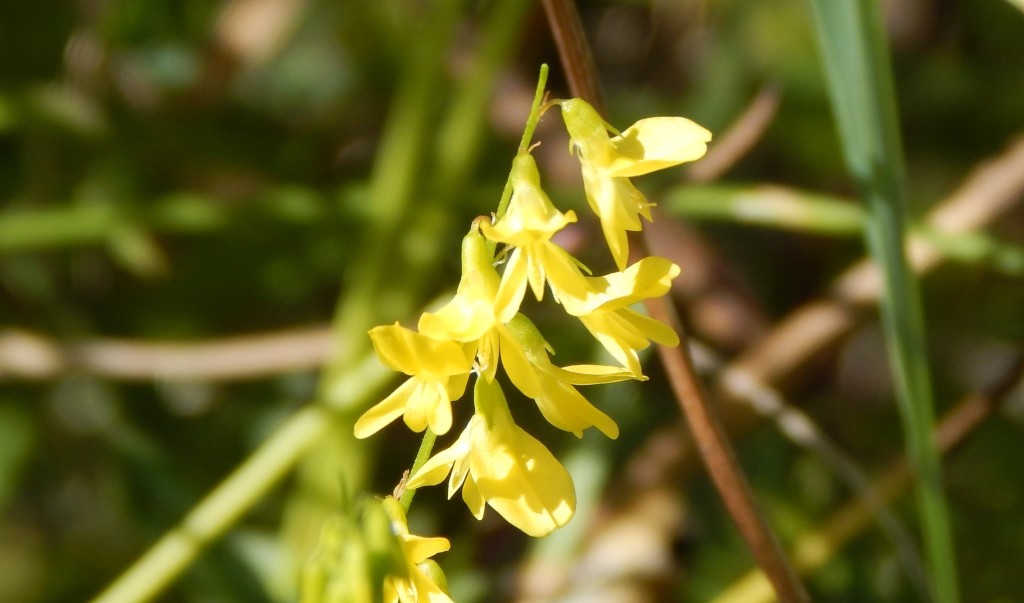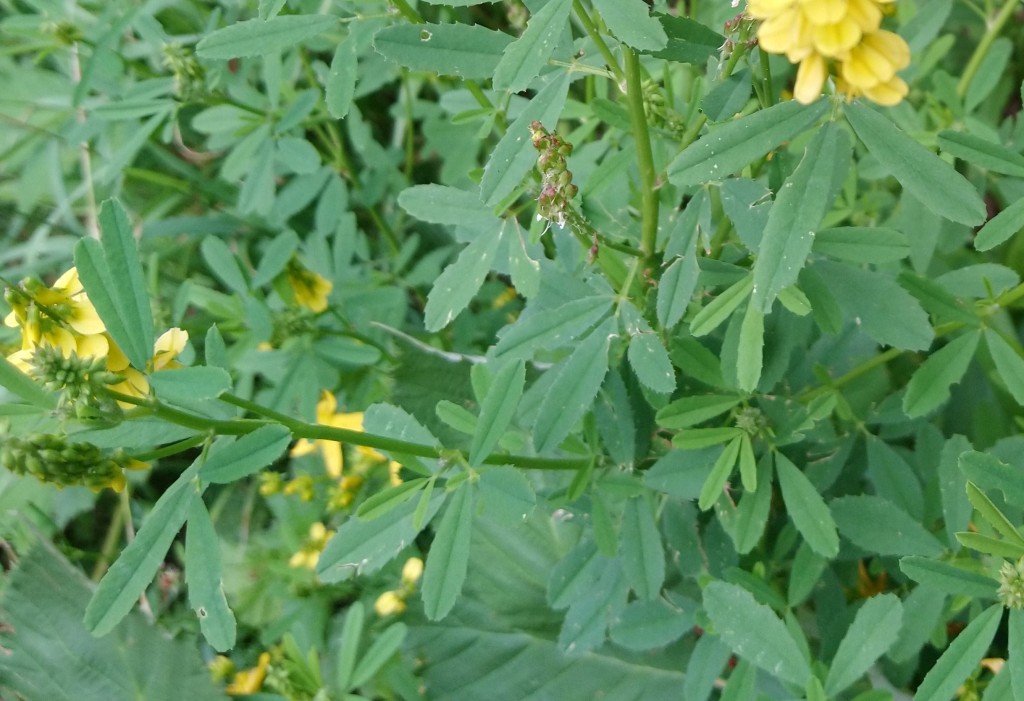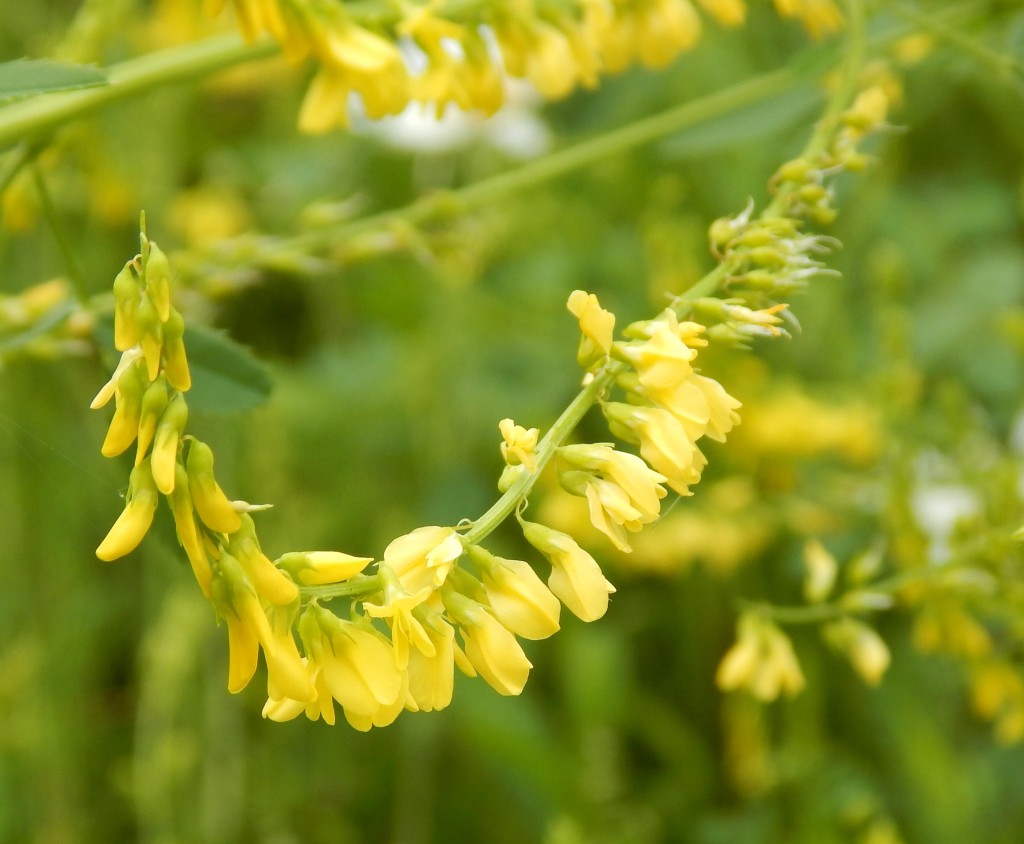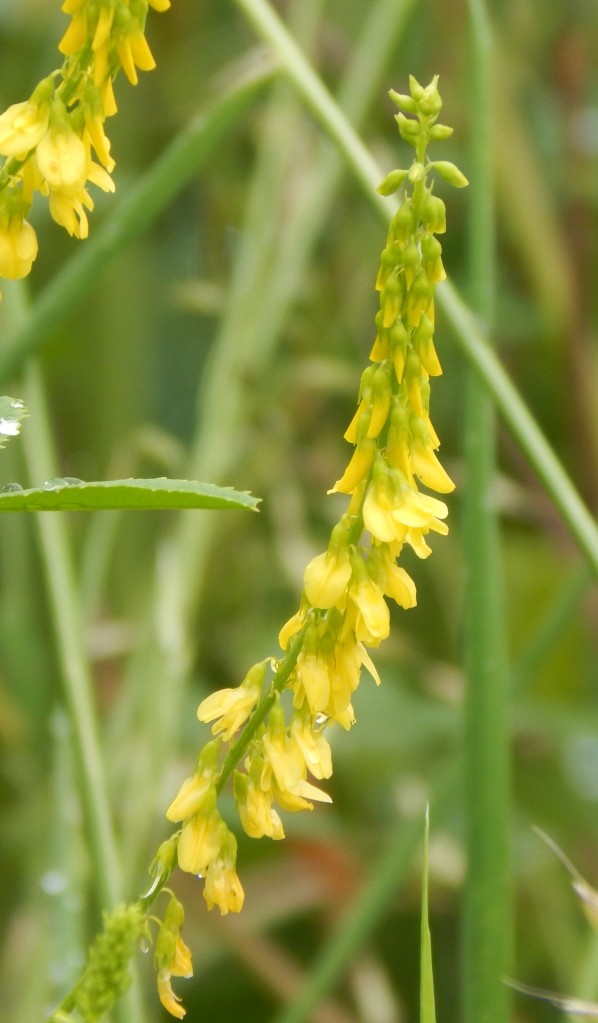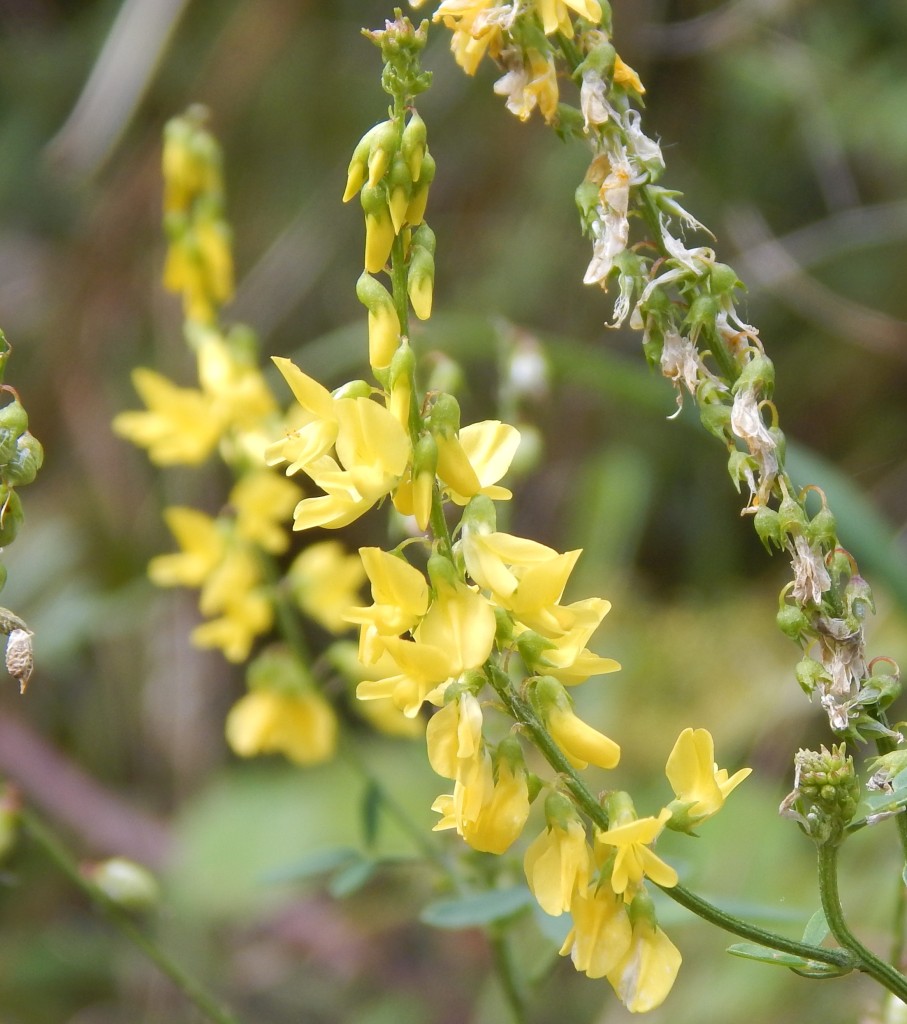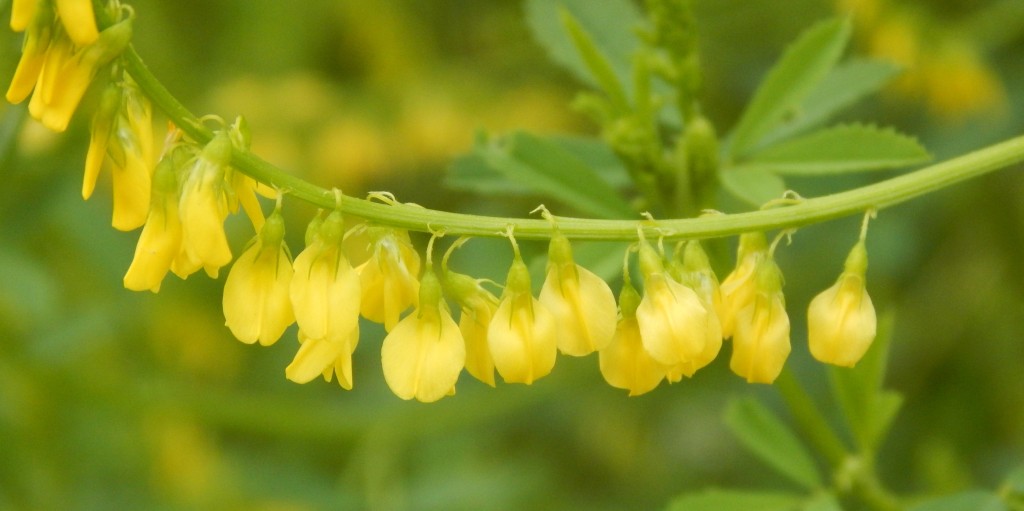
[343] Trifolium repens, White Clover
Trifolium pratense, Red Clover
Trifolium medium, Zigzag Clover
Introduction
There are about three hundred species of Clover, Trifolium, of which seventy may be found in the UK. Depending on circumstances they are forage crops, wildflowers or garden weeds.
The three most common species are Trifolium repens, White Clover; Trifolium pratense, Red Clover, and Trifolium medium, Zigzag (or Zig-zag) Clover.
Trifolium repens is also called Dutch Clover, Ladino Clover or Ladino.
The Irish word shamrock usually refers to Trifolium repens or other species of clover.
Taxonomy
Kingdom – Plants
Division – Vascular Plants
Class – Angiosperms (Flowering Plants)
Order – Fabales
Family – Fabaceae (Legumes)
Subfamily – Faboideae
Tribe – Trifolieae
Genus – Trifolium
Scientific Names – [A] Trifolium repens, [B] Trifolium pratense, [C] Trifolium medium
[A] and [B] are widely cultivated and have several varieties and cultivars.
Names
Clover comes from old Germanic roots as the name of these plants.
The Latin tri-folium, of course, means three-leaves, repens means creping, and pratense means meadow.
Ladino is the Italian for the Ladin language, derived from Latin and still spoken in parts of Northeast Italy. It’s an area where Trifolium repens is found.
Shamrock is an old Irish name but it is unclear which clover species it refers to.
Clovers
As leguminous plants in the family Fabaceae, clovers play a significant role in nitrogen fixation. They are often grown for cattle and other livestock mixed with perennial grasses.
They all have the trifoliate leaf structure that gives them their scientific name and their flowers are familiar and recognisable. Although florets have the same structure as others in the pea family, they are too small to notice in detail. They are bunched in a tight spherical inflorescence.
Several species of Trifolium are cultivated as garden plants, generally varieties that are more colourful than the three listed below.
[A] White Clover
Trifolium repens is native to Europe and central Asia and is one of the most widely cultivated types of clover. As a forage crop it has been introduced and cultivated worldwide and is now a very common weed in lawns and gardens.
The leaflets generally have a lighter coloured mark across them
The flowers are white and in general it is called White Clover. They may be tinged with a pale pink or cream colour. As agricultural crops intermediate or sometimes small varieties may be called Dutch Clover and large varieties may be called Ladino Clover. As the epithet repens would suggest, it spreads by underground runners.
I sometimes note unusual chromosome numbers and Trifolium repens is tetraploid so it would be expected to have two diploid ancestors. Despite some research there are several suggestions for one ancestor and it is possible that at least one of the two is undiscovered or extinct.
White Clover is the most important forage legume used in temperate climates. It is sometimes added to lawn grass as it survives close mowing and grazing. It is often a very common unwanted weed in lawns.
[B] Red Clover
Trifolium pratense is native to Europe, western Asia and Northern Africa and widely cultivated and naturalized elsewhere. Its cultivated uses are much the same as White Clover.
The flowers are more often coloured pale purple or pink but there are varieties with red flowers. It also has a white flowered form. (Some other species of Trifolium have darker red flowers.)
It is said that Red Clover can be distinguished from White Clover by the leaves, which have hairs where White Clover leaves are toothed. In practice you will need a microscope, excellent eyesight or a very good macro camera to see any evidence of either of these.
I am going to put these two together. You may see fields of clover, or grass mixed with clover.



If you look closer you will recognize the leaves and both species look the same.


If you zoom in microscopically, you can see the edges, which determine which of the two you are looking at. I will let you decide which is which.


When there are flowers, it’s easier to distinguish Red Clover from White Clover.

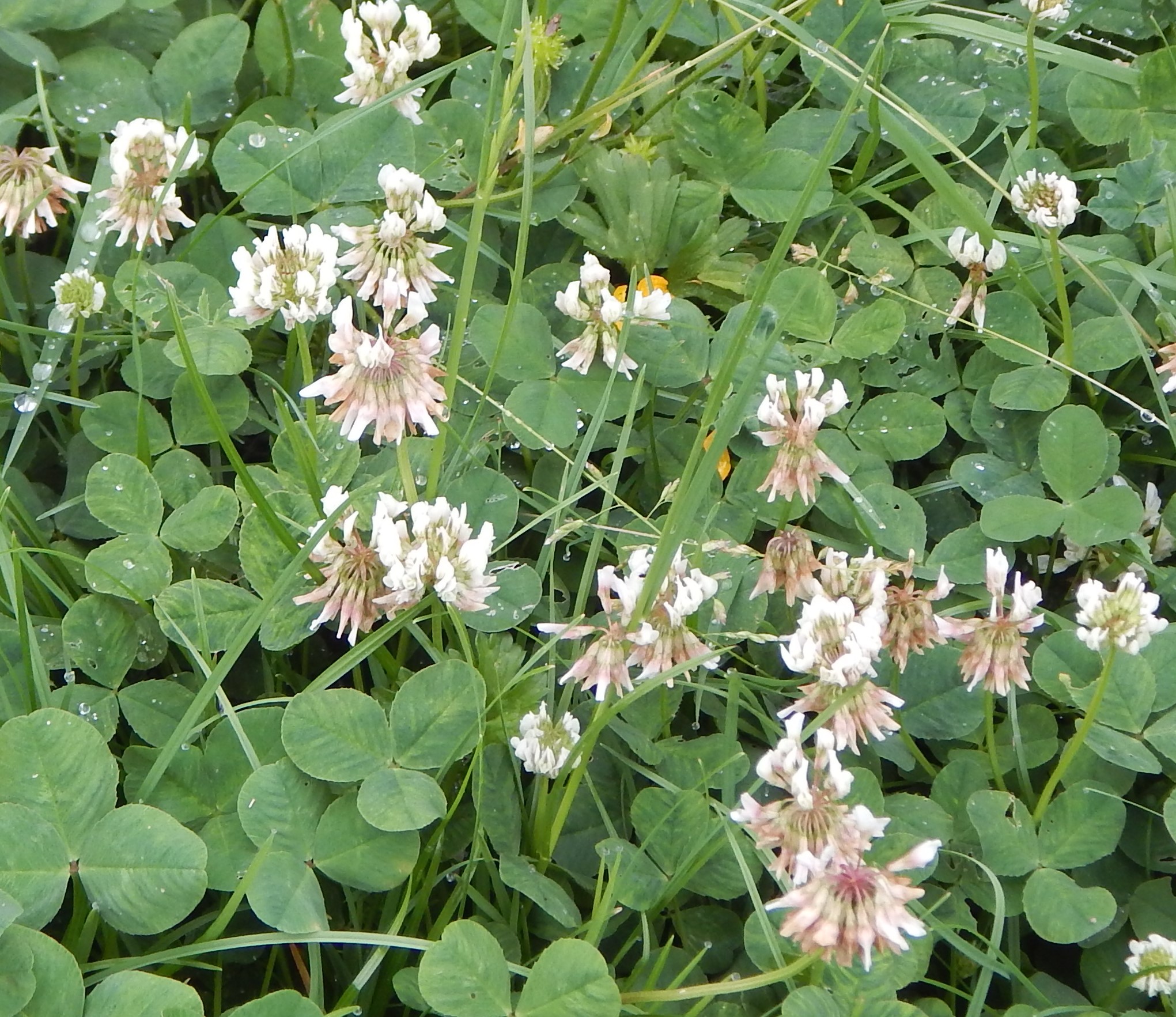


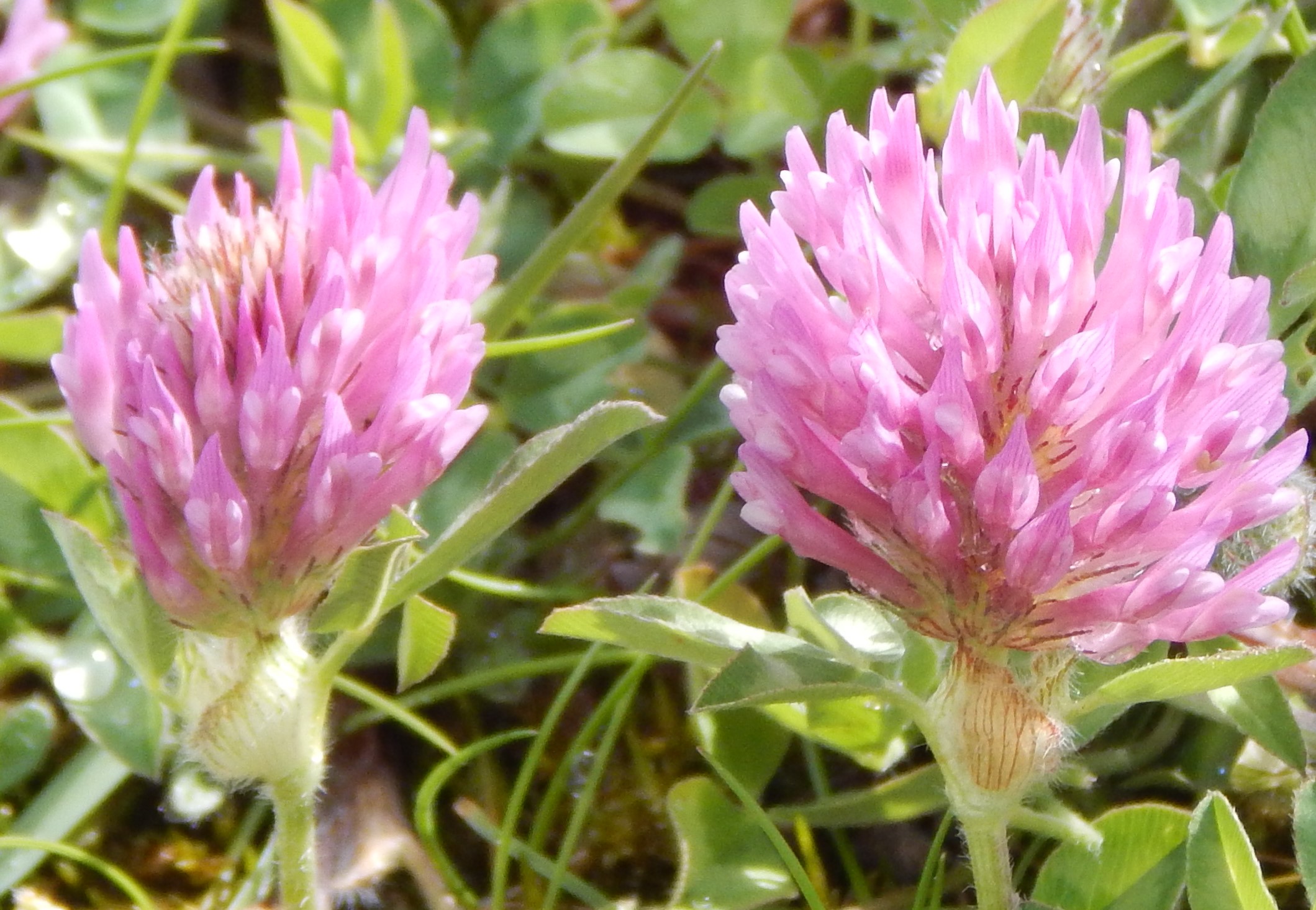
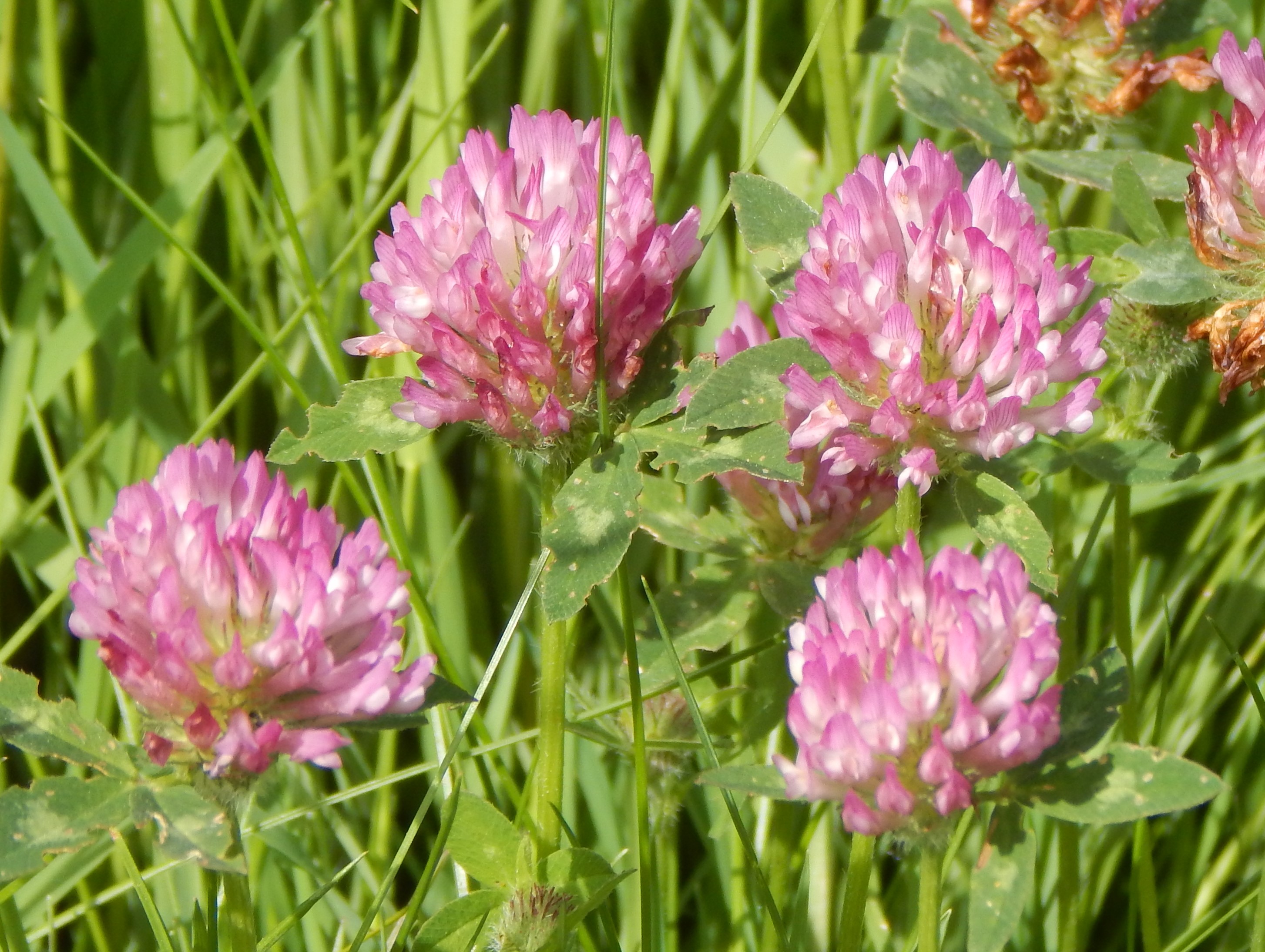


[C] Zigzag Clover
Trifolium medium is also native to most of Europe but remains a wildflower rather than a crop. Its flowers are similar to Red Clover but leaves are narrower without the white markings.
Its stems have a zigzag appearance.
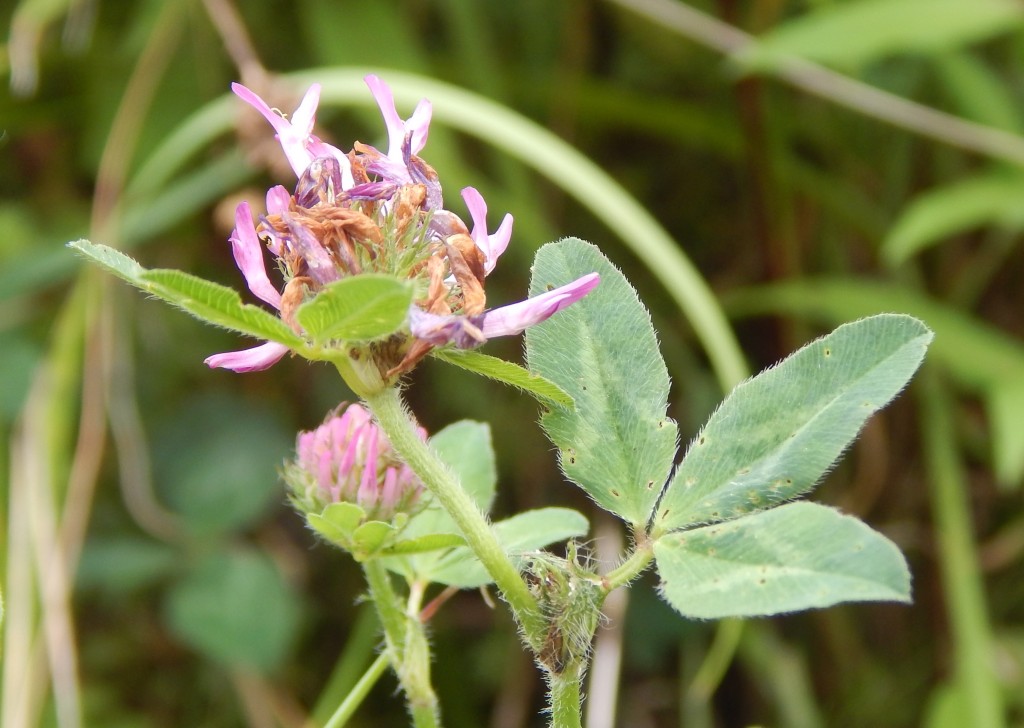


Other Notes
I need to add some of my usual disclaimers. It’s almost November as I write this and too late to augment my stock of pictures. I can’t guarantee any of them to species level. Finally, in real life the red flowers are redder than their pictures. The camera generally seems to reduce colours like red to much paler shades of pink,
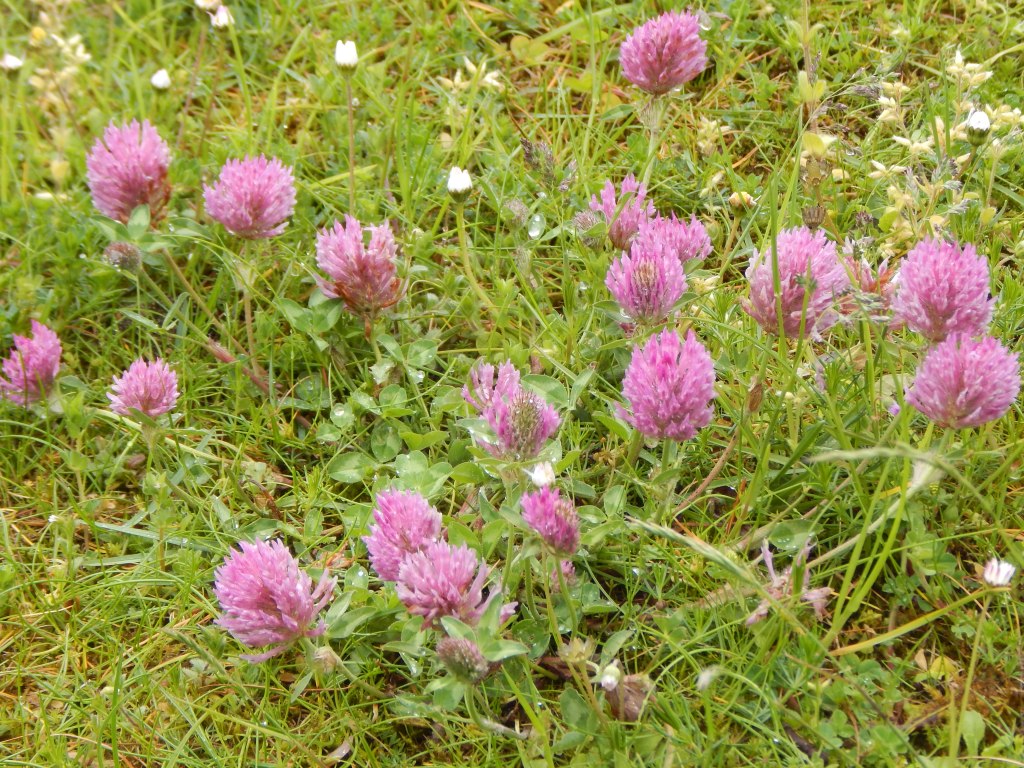
See also
We have met some close relatives [198] Sweet Pea, [214] Bird’s Foot Trefoil, and [227] Yellow Sweet Clover.

